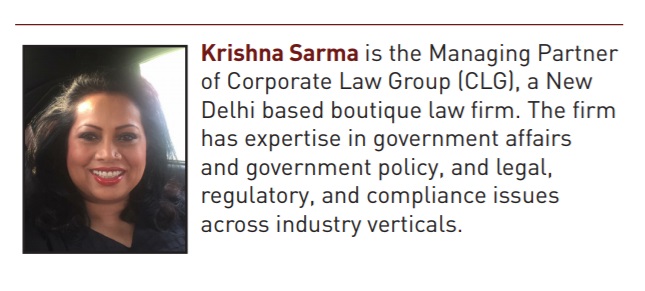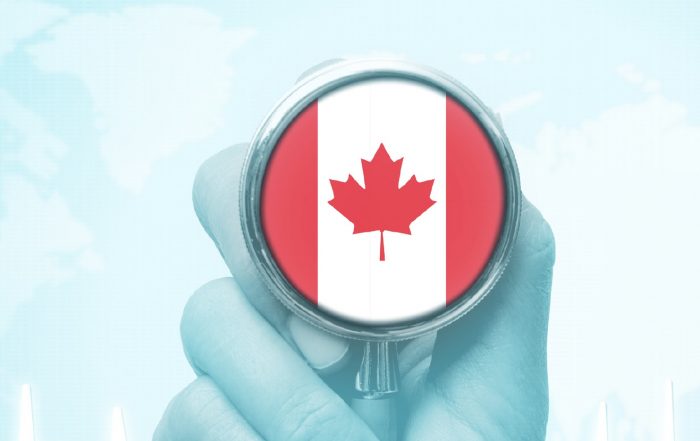
Spotlight on Tobacco: Reduced-Risk Tobacco Products: A Case of Policy Vacuum in India
by Krishna Sarma

India is often behind global benchmarks for policy developments, and new developments are frequently greeted with doubts and apprehensions. Typically, India follows World Health Organization (WHO) recommendations without any independent assessments, leading to mixed outcomes. In 2018, one such issue that has come center-stage is regulation of reduced-risk tobacco/nicotine products (RRPs). Growing evidence around the world suggests that RRPs like Electronic Nicotine Delivery Systems (ENDS) and Heated Tobacco Products (HTPs) pose significantly lower health risks than combustible cigarettes, and a growing number of jurisdictions like Japan, UK, and New Zealand are regulating these products in order to check misuse, thus enabling smokers to access an option that is significantly less harmful than combustible cigarettes. However, India seems to be once again in a recalcitrant and denial mode: current policy direction is towards a blanket prohibition, rather than regulation of these reduced-risk products.
Current Legal Position of ENDS and HTP in India
India, like many countries, does not have a formal legal framework regulating ENDS/HTPs. The legal position surrounding such products in India is still unclear. On August 28, 2018, the Union Ministry of Health and Family Welfare issued an Advisory to all state governments to prohibit the sale of ENDS/HTPs.1 The Advisory was required because, under the Constitution of India, health is a state subject, and each of the 29 states have to specifically issue a notification triggering the ban. Even prior to this Advisory, eight states had prohibited the sale of ENDS/HTPs by individual Office Orders/Circulars.2 After the Advisory, a ninth state, Tamil Nadu, issued a ban order. Consequently, in the rest of the states, for want of any specific Order, the sale of such products is legally valid. However, the Central Board of Indirect Taxes and Customs issued a circular to all Port Authorities to stop imports of the products.3 Because there are currently no domestic manufacturers of non-combustibles, this import ban amounted to a de facto prohibition of the products throughout the country.
However, in the current legal dispensation, ENDS/HTPs fall within a regulatory gap, as they are not categorized under the pharmaceuticals (drug) laws, under the tobacco laws, or under a sui generis regulation.
Treatment Under Drug Laws
Section 3(b) of India’s Drugs and Cosmetics Act (DCA) defines “drugs as any substance intended to be used for or in the diagnosis, treatment, mitigation or prevention of any disease or disorder in human beings or any substance intended for use as components of a drug.” This definition is comprehensive enough to cover smoking-cessation products containing nicotine that help people to stop smoking cigarettes or using other forms of tobacco. In fact, chewing gum, inhalers, and patches with nicotine content and other nicotine replacement therapy and that make medical claims are regulated as drugs under the DCA and Drugs and Cosmetics Rules (DCR). To date, the Drug Controller General of India (DCGI) has indeed given marketing approvals to nicotine chewing gums and lozenges as drugs in dosages of 2 mg and 4 mg. Furthermore, 2 mg nicotine chewing gums or lozenges manufactured under a valid DCA licence can also be sold from unlicensed premises, i.e., there is no requirement for a drug retail license to sell these products.4
Because ENDS/HTPs are not “drugs” under Indian law, as they are not intended to be used for or in the diagnosis, treatment, mitigation, or prevention of any disease or disorder in human beings, they would fall out of the ambit of the DCA/DCR.
Treatment Under Tobacco Laws
Tobacco products are regulated in India by the Cigarettes and Other Tobacco Products (Prohibition of Advertisement and Regulation of Trade and Commerce, Production, Supply and Distribution) Act, 2003 (COTPA). Section 3(b) defines “cigarettes” as:
“(b) cigarette includes,
(i) any roll of tobacco wrapped in paper or in any other substance not containing tobacco,
(ii) any roll of tobacco wrapped in any substance containing tobacco, which, by reason of its appearance, the type of tobacco used in the filter, or its packaging and labelling is likely to be offered to, or purchased by, consumers as cigarette, but does not include beedi, cheroot and cigar.”
Further, Section 3(p) of COTPA defines “tobacco product” as:
“(p) tobacco products means the products specified in the Schedule.”
As per Section 3(p) of COPTA read with Schedule thereof, tobacco products include cigarettes, cigars, cheroots, beedis, cigarette tobacco, pipe tobacco, hookah tobacco, chewing tobacco, snuff, gutkha, tooth powder containing tobacco, and pan masala or any chewing material having tobacco as one of its ingredients irrespective of whatever name it is called by.
Thus, ENDS/HTPs, along with ancillary products like cartridges or liquids, are not covered by COTPA either. Consequently, under Indian law, ENDS/HTPs are currently unregulated.
Regulatory Vacuum and Challenges
The problem stems from the fact that in most of the cases the state government bans were triggered by either DCGI actions or as an outcome of government reports on ENDS. The primary basis for most of the bans thus far is that nicotine in ENDS is an “unapproved drug.” All four states in India that have banned the sale of ENDS have found the products to be “unapproved drugs.” The stated rationale for this finding is that nicotine in ENDS has not been approved by DCGI and that ENDS were being sold in the market without relevant approval from the DCGI, and thus, such sale was in contravention of Section 18 (b) and (c) of the DCA. However, as noted above, ENDS/HTPs do not fall within the legal meaning of the term “drug.” Hence, it is legally difficult to accept that what cannot be a “drug” can be an “unapproved drug.” Hence, the individual state actions to ban ENDS/HTPs as “unapproved drugs” remains under a shadow of unestablished legal principles.
A couple of states have banned ENDS/HTPs without any specific statutory basis, citing “public health concerns.”5 Some of these bans have been challenged before the respective High Courts.6 There is a Public Interest Litigation pending before the Delhi High Court seeking regulation of ENDS.7 The case is next listed for hearing on July 11, 2019. Overall, there is no clear legal/regulatory pathway available so far. Given that neither the drug nor the tobacco related laws provide any niche for regulation of ENDS/HTPs at the moment, a sui generis legislation or sub-regulation could be something to look for.
Need for Regulation – The Optimal Way Forward:
There is a growing quantum of evidence to show that ENDS/HTPs are potentially less harmful compared to traditional combustible cigarettes. This is primarily attributed to the fact that in case of ENDS/HTPs, there is no combustion of tobacco or of the other constituents of a cigarette, and the harmful by-products that result from cigarette smoke are substantially reduced. In light of this, an attempt to prohibit ENDS but allow trade in combustible cigarettes seems paradoxical and far from the objective of reducing harm related to tobacco use.
However, there are genuine regulatory concerns regarding ENDS/HTPs, including safety, standards, and the potential for ENDS/HTPs to be misused or abused by certain sections of the population, especially non-smokers, children, and adolescents.
Presumably, an appropriate policy structure should be one that is based on the objective of minimizing the risks of misuse while maximizing the potential of products such as ENDS in the endeavour to reduce the harm of cigarette smoking. Thus, a future policy action can possibly be one that balances the risks and benefits of products such as ENDS/HTPs. Prohibition, without necessary deliberation, and analysis is never a good policy option, though it could well be an easy one. What is surely lacking in the Indian discourse on ENDS/HTPs are the elements of discussion, consultation, and inclusive decision-making process after due consideration of available facts and experience in other countries. The policy development process adopted by countries like New Zealand8 before making a decision on ENDS/HTPs, could be a good example to follow for India.
- https://mohfw.gov.in/newshighlights/advisory-electronic-nicotine-delivery-systems-ends-including-e-cigarettes-heat-not (Last accessed on March 7, 2019).
- States of Maharashtra, Karnataka, Punjab, Bihar, Kerala, J&K, Mizoram, Uttar Pradesh, Kerala and Jammu and Kashmir.
- http://www.cbic.gov.in/resources//htdocs-cbec/customs/cs-circulars/cs-circulars-2018/Circular-46-2018-Customs.pdf;jsessionid=2A1CB034F523E6E693D41E4FAD86350F (Last accessed on March 7, 2019).
- Certain Drugs, under Schedule K to the Drugs and Cosmetics Rules can be sold through un-licensed premises.
- States of Kerala and Jammu and Kashmir.
- Bans by State Governments of Karnataka, Tamil Nadu, and Jammu and Kashmir have been challenged before the Bangalore High Court, Madras High Court, and Jammu and Kashmir High Court respectively. Cases are pending.
- W.P.(C) 10624/2017, Seema Sehgal vs Union of India and Ors.
- https://www.health.govt.nz/system/files/documents/pages/ris-regulation-of-e-cigarettes-and-emerging-tobacco-and-nicotine-delivery-products-nov17.pdf (Last accessed on March 7, 2019).
Update Magazine
April/May 2019







